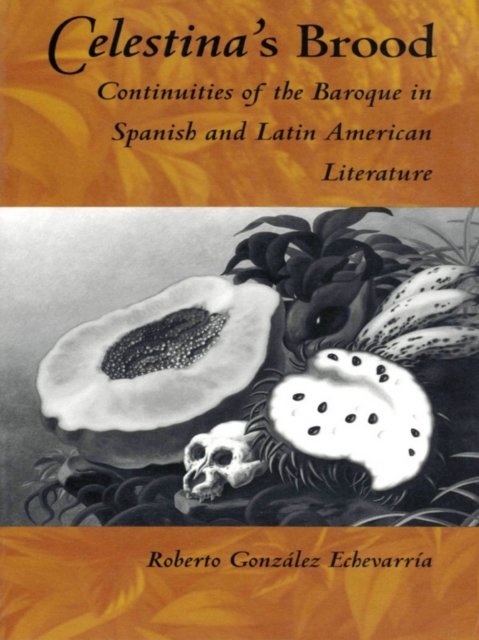
Celestina's Brood : Continuities of the Baroque in Spanish and Latin American Literature PDF
by Gonzalez Echevarria Roberto Gonzalez Echevarria
Please note: eBooks can only be purchased with a UK issued credit card and all our eBooks (ePub and PDF) are DRM protected.
Description
Published in 1499 and centered on the figure of a bawd and witch, Fernando de Rojas' dark and disturbing Celestina was destined to become the most suppressed classic in Spanish literary history. Routinely ignored in Spanish letters, the book nonetheless echoes through contemporary Spanish and Latin American literature. This is the phenomenon that Celestina's Brood explores.
Roberto Gonzalez Echevarria, one of the most eminent and influential critics of Hispanic literature writing today, uses Rojas' text as his starting point to offer an exploration of modernity in the Hispanic literary tradition, and of the Baroque as an expression of the modern. His analysis of Celestina reveals the relentless probing of the limits of language and morality that mark the work as the beginning of literary modernity in Spanish, and the start of a tradition distinguished by a penchant for the excesses of the Baroque. Gonzalez Echevarria pursues this tradition and its meaning through the works of major figures such as Cervantes, Lope de Vega, Calderon de la Barca, Alejo Carpentier, Carlos Fuentes, Gabriel Garcia Marquez, Nicolas Guillen, and Severo Sarduy, as well as through the works of lesser-known authors.
By revealing continuities of the Baroque, Celestina's Brood cuts across conventional distinctions between Spanish and Latin American literary traditions to show their profound and previously unimagined affinity.
Roberto Gonzalez Echevarria, one of the most eminent and influential critics of Hispanic literature writing today, uses Rojas' text as his starting point to offer an exploration of modernity in the Hispanic literary tradition, and of the Baroque as an expression of the modern. His analysis of Celestina reveals the relentless probing of the limits of language and morality that mark the work as the beginning of literary modernity in Spanish, and the start of a tradition distinguished by a penchant for the excesses of the Baroque. Gonzalez Echevarria pursues this tradition and its meaning through the works of major figures such as Cervantes, Lope de Vega, Calderon de la Barca, Alejo Carpentier, Carlos Fuentes, Gabriel Garcia Marquez, Nicolas Guillen, and Severo Sarduy, as well as through the works of lesser-known authors.
By revealing continuities of the Baroque, Celestina's Brood cuts across conventional distinctions between Spanish and Latin American literary traditions to show their profound and previously unimagined affinity.
Information
-
Download - Immediately Available
- Format:PDF
- Pages:272 pages
- Publisher:Duke University Press
- Publication Date:15/09/1993
- Category:
- ISBN:9780822396239
Information
-
Download - Immediately Available
- Format:PDF
- Pages:272 pages
- Publisher:Duke University Press
- Publication Date:15/09/1993
- Category:
- ISBN:9780822396239






